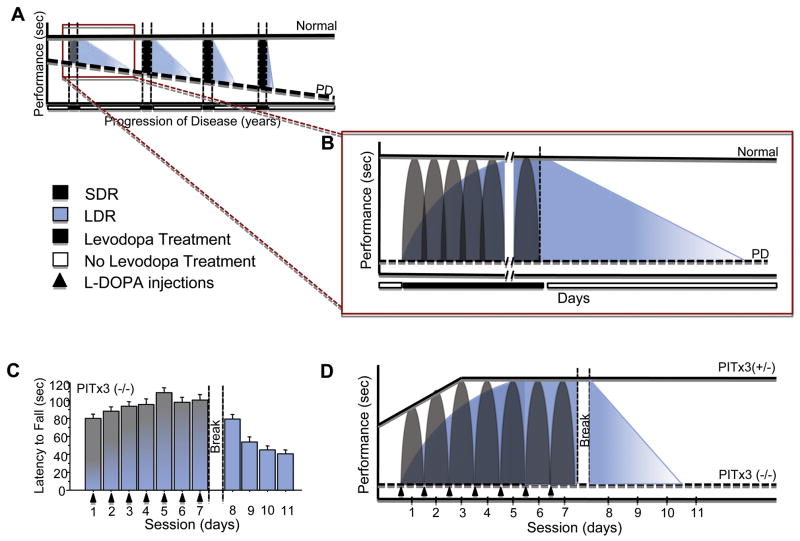FIGURE 8.
Schematic comparing LDR in L-dopa treatment of Parkinson disease (PD) and effects of L-dopa treatment on rotarod performance in PITx3-deficient mice. (A) Short-duration response (SDR) (gray) and long-duration response (LDR) (blue) during the progression of PD. As the disease progresses, baseline performance (dashed line) decreases. In addition, SDR increases in magnitude throughout the disease, although this is due to the progressive decline in baseline performance of patients.36 LDR, however, decreases in duration as the disease progresses.37–39 (B) SDR and LDR in a single treatment period in PD. Before L-dopa treatment, baseline performance (dashed line) is significantly lower in PD patients than in normal patients (solid line). With L-dopa treatment, SDR is observed after each L-dopa dose (gray shading). After L-dopa treatment discontinuation, performance is not immediately lost, but displays a gradual decline due to LDR (blue shading).25,27,28,39,40 (C) Performance on rotarod task of PITx3(−/−) mice during L-dopa treatment and following discontinuation. (D) Hypothesized SDR and LDR in PITx3-deficient mice. Before L-dopa treatment, baseline performance of PITx3(−/−) (dashed line) on the rotarod task is significantly lower than that of PITx3(+/−) (solid line). With each L-dopa injection, PITx3(−/−) display SDR (gray shading), which rescues performance on the rotarod. Multiple training sessions with L-dopa administration allow learning to occur, as observed in gradual improvement across sessions (blue shading). After L-dopa treatment is discontinued, performance gradually degrades, similarly to the decline in LDR observed in patients.

